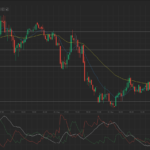Both West Texas Intermediate and Brent benchmarks rose on Friday and settled the week higher, buoyed by upbeat economic growth numbers from the US, coupled with ongoing supply outages from Libya, a string of glitches at US refineries and strikes at four Total refineries in France. A government report showing US crude inventories fell for a third week in the seven days to December 13 and fuel demand rising to the highest in 5-1/2 years further supported prices.
On the New York Mercantile Exchange, WTI crude for delivery in February rose by 0.13% to $99.17 on Friday after holding in a daily range between $99.40 and $98.58 per barrel, having hit a 2-month high of $99.48 on Thursday. The US benchmark advanced throughout the week to settle 2.8% higher, offsetting the previous five-day periods 1.3% decline.
Meanwhile on the ICE, Brent futures for settlement in February surged 1.3% on Friday to $111.75 a barrel, the highest close since December 4. Prices swung between a two-week high of $111.90 and days low of $109.88, ending the week 2.7% higher. Brents premium to its US counterpart widened to $12.58 on Friday, up from $11.46 the previous day.
Oil prices drew support throughout the week amid bullish sentiment fueled by upbeat economic numbers from the US, the worlds top consumer. The Federal Reserve announced on Wednesday it will reduce its monthly bond purchases starting January, supporting speculations that the US economy fares well and its recovery seems sustainable, thus brightening oil’s demand outlook. Although Fed’s move caused a surge in the dollar, the tapering decision favored the energy sector in the long-term.
Fed’s balance sheet has swelled to almost $4 trillion as an attempt to revive the US labor market and put millions of unemployed Americans back to work. The central bank’s asset purchases will be divided between $40 billion in Treasuries and $35 billion in mortgage bonds, Bernanke said.
Despite posting some worse-than-expected readings on Thursday, including a spike in last weeks initial jobless claims and existing home sales falling to the lowest in a year, the US economy showed strong signs of improvement on Friday, backing Feds decision to taper.
Fastest growth in nearly 2 years
The Commerce Departments final third quarter GDP growth reading defied analysts projections for a confirmation of the preliminary values 3.6% and posted at 4.1%, the largest quarterly expansion in nearly 2 years.
Meanwhile, consumer spending, which accounts for 70% of the economy, outpaced expectations as well. The final Personal Consumption Expenditures reading jumped by 2.0% in the three months through September, exceeding projections to have gained 1.4%, the same as in the previous quarter.
Amrita Sen, chief oil market strategist at Energy Aspects Ltd., said on Friday, cited by Bloomberg: “Improvement in the U.S. economy is clear. That should offset any small negative impact from tapering. It has taken a few months for the market to acknowledge the upside surprise from global oil demand.”
US inventories, demand
The Energy Information Administration, the Energy Departments statistical arm, reported on Wednesday that US crude stockpiles slipped for a third straight week, signaling demand is reviving.
Crude stockpiles fell by 2.94 million barrels in the seven days to December 13 and have declined by 18 million over the past three weeks.
Meanwhile, US fuel consumption jumped by 13% to 21 million barrels last week, the highest level since April 2008.
Inventories at Cushing, Oklahoma, the biggest US storage hub and delivery point for NYMEX-traded contracts, fell by 0.6 million barrels to 40.6 million from the preceding week and were well beneath last year’s 47.0 million during the comparable period.
Phil Flynn, an energy analyst at Price Futures Group in Chicago, said, cited by CNBC: “We have strong demand going into the holiday. Were expecting record holiday travel, so were going to use more gasoline.”
Refinery utilization dropped to 91.5%, down from 92.6% from the previous week. Motor gasoline production jumped, while distillate fuel output decreased, averaging 9.3 million and 5.0 million barrels per day, respectively.
Total gasoline inventories rose by 1.3 million barrels in the seven days through December 13 to 220.5 million, outperforming projections for a 1.5 million build. Gasoline consumption surged 8% to 9.02 million barrels per day, the first increase in six weeks. Distillate fuel inventories, which include diesel and heating oil, fell by 2.1 million barrels to 116 million, defying projections to remain flat.
The U.S. Commodity Futures Trading Commission said on Friday that speculatorss bullish bets on US crude rose in the week ended December 17.
Libya supply disruptions
Also adding to the build-up in prices, exports from Libya, holder of Africas biggest crude reserves, remained crippled after the Libyan government failed to negotiate the reopening of three eastern ports last Sunday, which could have brought a combined capacity of over 600 000 barrels per day back online. As a result of the ongoing protests, Libya is stepping up fuel imports.
Ibrahim Al Jedran, a Libyan rebel leader, said on Sunday that the ports of Es Sider, Ras Lanuf and Zueitina will remain closed after the official government rejected his demands to share oil revenue with his self-proclaimed government. Jerdan had signaled that the eastern region known as Cyrenaica may sell crude without approval, if his terms were not met, leaving Libya’s current nationwide exports at 110 000 bpd from five ports under government control. Output amounted to 210 000 barrels per day last month, down from 1.55 million bpd in 2010.
Investors were also keeping a close watch on the expert-level talks between Iran and six world powers which resumed on Thursday, aiming to implement the recently struck groundbreaking deal on curbing the Persian Gulf nation’s disputed nuclear program. A possible lift of international sanctions against Iran will bring back as much as 1 million barrels of oil per day to the global market.
In France, striking workers closed a fourth Total refinery on Thursday, raising the capacity offline to around 840 000 barrels per day, boosting demand for distillate imports. A string of recent glitches at US refineries also underpinned the market.





